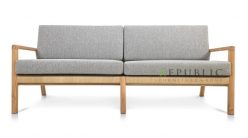jvir.org
JO Roehm and JW Thomas
Section of Cardiovascular and Interventional Radiology, Methodist Hospital, Baylor College of Medicine, Houston, TX 77030, USA.
PURPOSE: To determine whether a twist technique can help reduce the occurrence of fine-wire prolapse proximal to the hooks of the Bird’s Nest filter in the inferior vena cava. MATERIALS AND METHODS: Abdominal radiographs were retrospectively analyzed after placement of filters with no twist (n = 100), with two 360 degree twists (n = 55), or with three 360 degree twists (n = 61). RESULTS: Prolapse of 5 mm or more was encountered in 32% of cases (32 of 100 cases) in which no twists were imparted. The average length of prolapse was 2.8 cm (range, 0.5-5.1 cm). The average length of the filter nest was 9.4 cm (range 5.1-13.6 cm). Use of two 360 degree twists reduced the rate of prolapse to 9.1% (five of 55 cases) (P < .005 vs no twist); the average length of prolapse was 2.8 cm (range, 0.6-6.4 cm). The average filter-nest length was reduced 7.5 cm (range, 4.0-13.3 cm). With three 360 degree twists, prolapse occurred in 4.9% of cases (three of 61 cases) (P < .005 vs no twist). The average length of prolapse was 2.6 cm (range, 0.7-4.8 cm). The average filter-nest length was 7.8 cm (range, 3.5-12.8 cm). The difference in prolapse frequency when two twists were used as opposed to three is not statistically significant. CONCLUSION: Application of two or three 360 degree twists to the catheter-sheath unit during insertion of the Bird's Nest filter produces a statistically significant reduction in the occurrence of wire prolapse.





